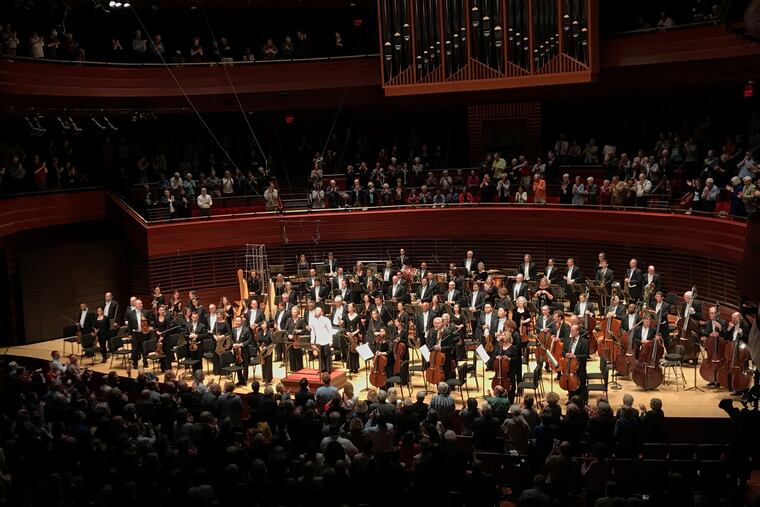Mahler’s ‘Symphony No. 9’ plus the Philadelphia Orchestra equals tragedy without trauma
This late work is typically thought of as death-haunted. So why did I feel exhilarated, affirmed, and really rather happy on Thursday at the end of the performance?

A great Mahler symphony performance — particularly in the death-haunted late works — often prompts words like shattering. That’s especially true of the Symphony No. 9, which is said to incorporate the composer’s defective heartbeat, his idiosyncratic walk, and one of several farewells to life. The experience might be called cleansing your own tragedy through that of others.
So why did I feel exhilarated, affirmed, and really rather happy on Thursday at the end of the Philadelphia Orchestra’s rendition of Mahler’s Ninth? And slightly guilty about it? Music director Yannick Nézet-Séguin might not have a morbid bone in his body (at least not yet), yielding this 90-minute symphony more in the warm, Italianate manner of his mentor Carlo Maria Giulini than of Leonard Bernstein — who reacted to the desperate scrawling in the margins of the composer’s manuscript, reflecting grief over loss (his youth, his marriage, his position at the Vienna State Opera) as he migrated to New York City for the final years of his life.
Broadcasts of Nézet-Séguin Mahler Ninths in years past were promising but only half-convincing; this performance was fully realized on its own terms, and in ways that never remotely diminished the symphony’s endless depths. The intermissionless concert was a bit short but didn’t feel that way. Besides, what other music can be sensibly placed on the same program? Also, perhaps devoting all rehearsal time to this one piece allowed such an exceptional performance to happen.
Made up of four movements, each with its own epic sense of incident, the Ninth became four separate worlds, the first in Nézet-Séguin’s typical “concerto for orchestra” mode, with high-personality solos amid the overall lyrical sweep of the melody-steeped movement. On a deeper level, the music was a monumental song with all manner of interruptions — so many that they became the remade version of the song, until that, too, was splintered and ultimately reassembled in altered form.
It all seemed to be about wounds that don’t heal. In Wagner’s Parsifal (which Mahler had to have known well), such unhealing wounds are associated with sin and failure of spirit. In Mahler’s first movement, wounds are the price of well-lived life. What allowed you to stand back and observe this subtext was emphasis on lower-register harp writing that frames significant sections and that was played with gravitas (not a quality one associates with that instrument) by Elizabeth Hainen and Helen Gerhold.
Wildly contrasting episodes in the less-congenial second and third movements — juxtaposed so abruptly that the music can seem like a series of non sequiturs — were given their full due with all sorts of gear shifts, but ones that built on each other, climaxing frenetically. The second movement’s Austrian folk dance had a Viennese lilt but a particularly satiric edge, as observed by an unsentimental outsider. In a concert postmortem, one friend interpreted the hectic third movement as Mahler getting everything finished before he dies.
The lyrical fourth movement is often played as a bookend to the first. But although the first movement reflects the outdoors that Mahler loved so much, the fourth movement has Bach-like elements, suggesting the composer was building anew on old musical foundations. Bernstein talked about how the music is a terrifying confrontation with death, but Nézet-Séguin created a loving goodbye to an old world with an implied celebration of a new world to come.
For the occasion, the orchestra playing was optimum — something quite different from perfect. Hearing the Philadelphia string players losing their cool (and intonation) during the more intense moments of the first movement showed that passion over polish is the right approach here. And what constitutes optimum playing these days has changed. The consistent composure of the Philadelphians under Wolfgang Sawallisch and Charles Dutoit was always good to encounter, but here was a more personal sense of commitment.
The Philadelphia Orchestra repeats the program at 2 p.m., Friday, March 10, and Sunday, March 12. Information: 215-893-1999 or philorch.org.